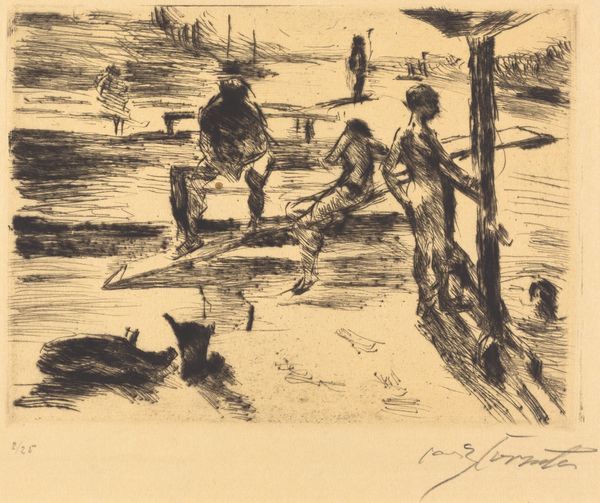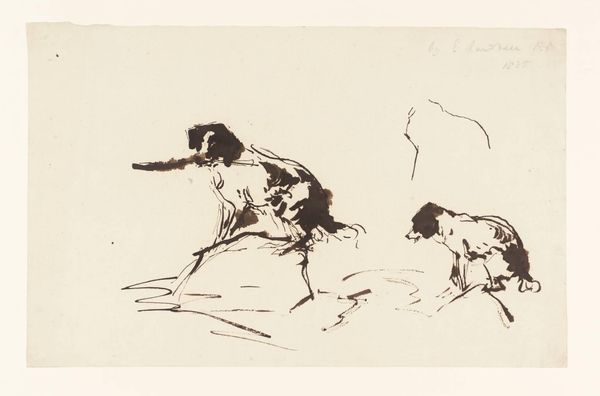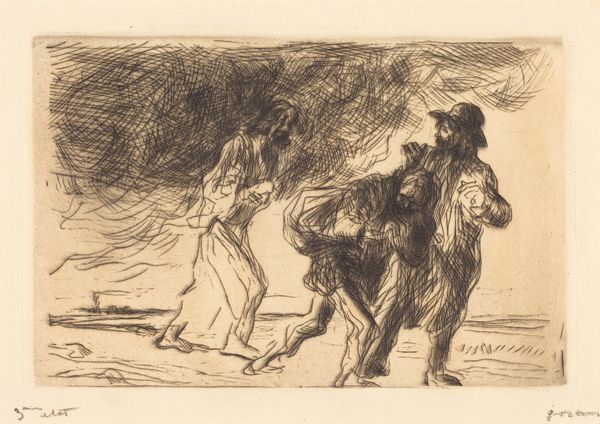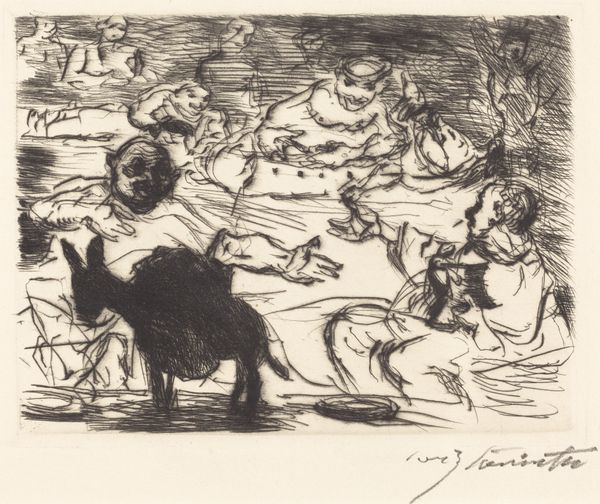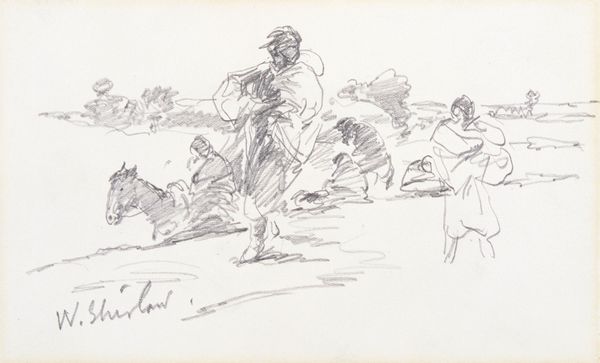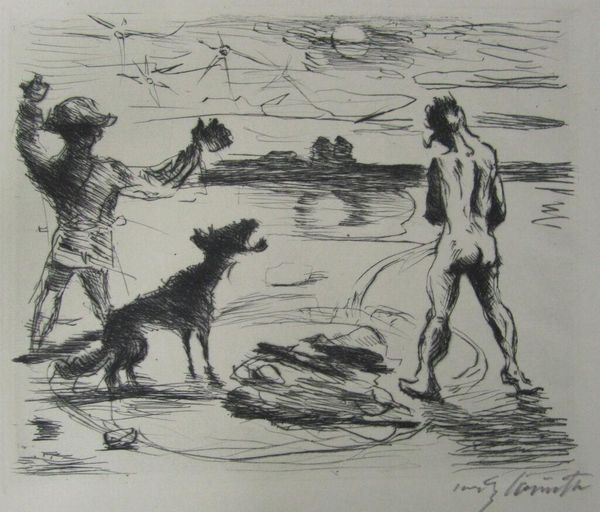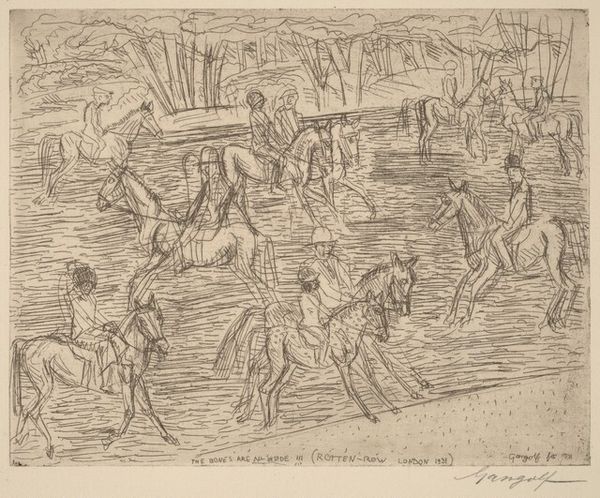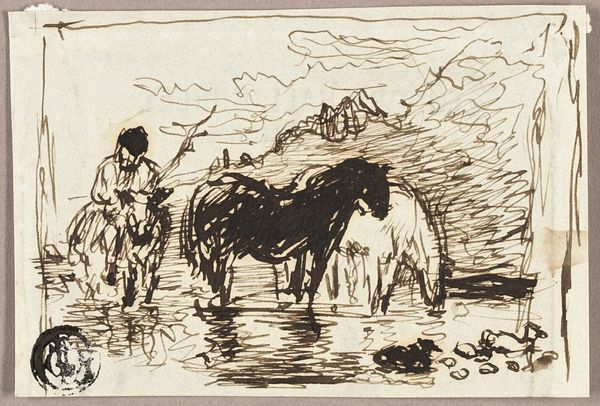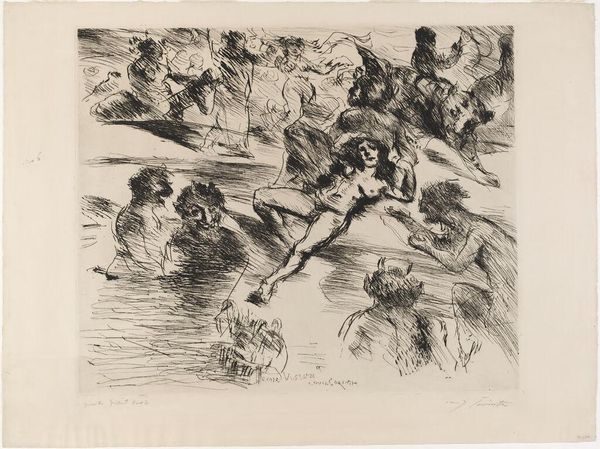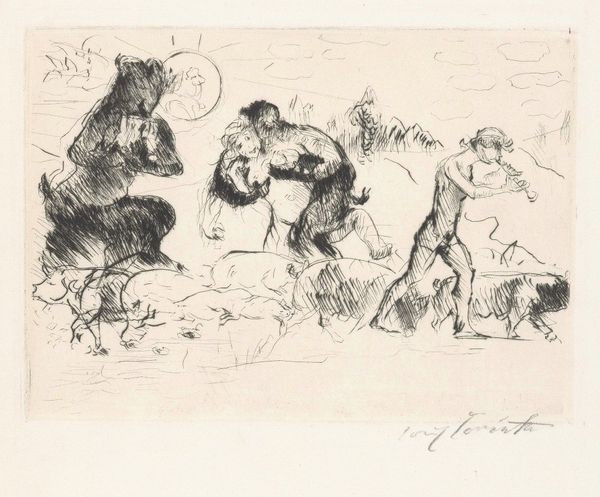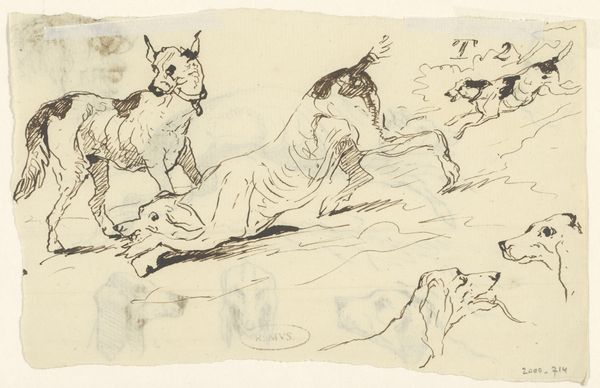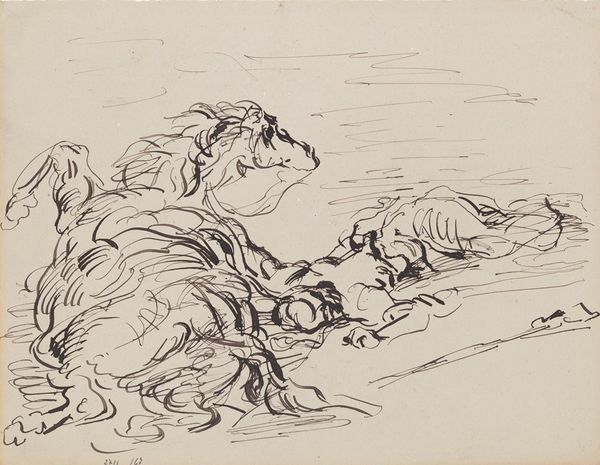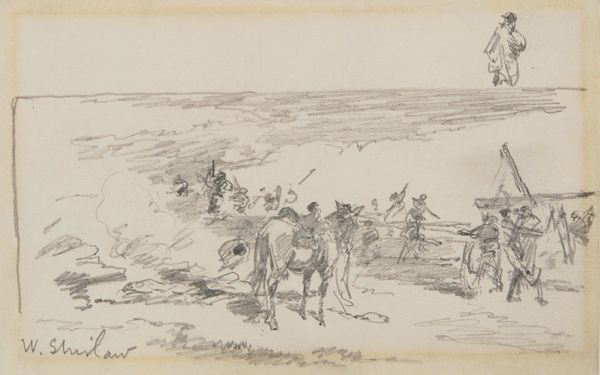
Das Gastmahl des Trimalchio: pl. VII (The Banquet of Trimalchio: pl. VII) 1919
0:00
0:00
drawing, print, ink
#
drawing
# print
#
figuration
#
ink
#
expressionism
#
history-painting
#
nude
Dimensions: plate: 14.7 x 18 cm (5 13/16 x 7 1/16 in.) sheet: 25.2 x 34.7 cm (9 15/16 x 13 11/16 in.)
Copyright: National Gallery of Art: CC0 1.0
Curator: This is Lovis Corinth's 1919 ink drawing, "The Banquet of Trimalchio: pl. VII." It’s part of a series illustrating scenes from Petronius's "Satyricon," depicting the vulgar excesses of a Roman freedman's feast. Editor: My first reaction is a kind of visceral discomfort. The scratchy lines and stark contrasts create a disturbing, almost violent atmosphere. There's something raw and untamed about it. Curator: Indeed. Corinth's Expressionist style perfectly captures the chaotic and debauched nature of Trimalchio's banquet. Look at the exaggerated figures, the crude gestures. This isn't about classical beauty; it's about social satire. The scene plays with themes of excess, power, and the grotesque. Editor: Exactly, it feels incredibly critical, doesn’t it? The stark naked figure feels vulnerable but also defiant against this chaotic and potentially harmful background. And I can't help but see in it reflections on class and power structures. Is Corinth suggesting a corruption of the spirit within such displays of material wealth and social climbing? Curator: I think that's precisely what Corinth aimed to express. The "Satyricon" was itself a commentary on social decay, and Corinth, in the aftermath of World War I, would have seen parallels between the Roman Empire and the state of post-war Germany. Editor: The figures aren't idealized. They appear almost bestial in their behavior, highlighting the dehumanizing effects of wealth and the abuse of power, right? There’s something primal about their interactions, almost aggressively masculine. It makes me wonder what voices are absent or silenced in this kind of depiction, doesn't it? Who profits from this grotesque display? Curator: Corinth's work is often preoccupied with the darker aspects of humanity. He was keenly aware of the societal upheavals around him, and he used his art to reflect and critique them. This print captures a very particular historical moment while also resonating with broader themes of human behavior and social inequity. Editor: Seeing the piece in light of that historical context brings it to life. The way he situates themes of gender, class and race helps show the social dynamics beneath the surface. Curator: It is interesting how the context allows us to connect past to present and examine those critical issues through art. Editor: It makes you question, who dictates which voices or experiences become memorialized?
Comments
No comments
Be the first to comment and join the conversation on the ultimate creative platform.
